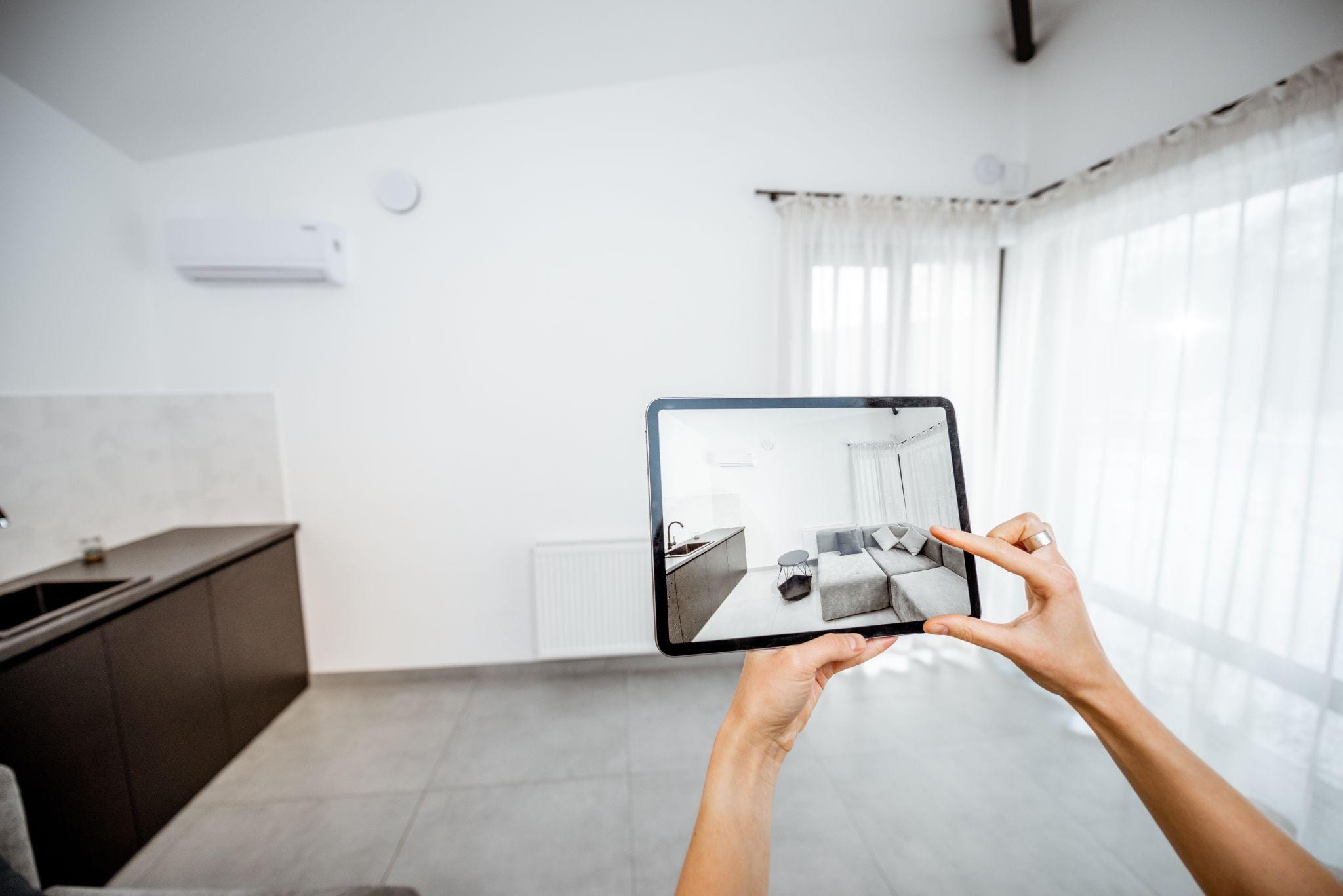AR/VR in Real Estate: Benefits, Use Cases & Future Impact
The real estate industry is experiencing a transformative shift with the advent of Augmented Reality (AR). This technology is not just enhancing property marketing; it's revolutionizing how buyers interact with listings, visualize spaces, and ultimately make purchasing decisions.

From virtual property tours to interactive floor plans, AR is creating immersive experiences that bridge the gap between physical and digital time experience
Augmented Reality’s Role in Real Estate and Home Tour
Augmented reality is transforming the real estate industry by offering immersive experiences for buyers and renters. With augmented reality in real estate, clients can take virtual tours of properties, visualize renovations, or see how furniture fits into a room—all without setting foot inside. Augmented reality real estate examples include 3D walkthroughs, virtual staging, and interactive floor plans. Real estate augmented reality tools make it easier for agents to showcase properties, attract more interest, and close deals faster. For landlords, augmented reality rental previews help tenants explore apartments remotely, providing a more engaging, efficient, and innovative way to find their perfect home.
Also read about Real Estate Mixed Reality Campaign: Sattva Group Forest Ridge Ad With Flam Mixed Reality
The Rise of Virtual Tours in Real Estate
Virtual tours have become a cornerstone of modern real estate marketing. Traditionally, potential buyers relied on static images and text descriptions to sell a property's appeal. However, AR technology allows them to take virtual tours from the comfort of their homes, offering a more engaging and realistic view of properties.
Benefits of Virtual Tours
Accessibility: Buyers can explore properties without geographical constraints.
Time Efficiency: Virtual tours save time by allowing buyers to narrow down their choices before scheduling in-person visits.
Enhanced Visualization: AR provides a 360-degree view of properties, helping buyers visualize layouts and spaces more effectively.
How AR is Transforming Property Marketing
Interactive 3D Floor Plans
AR technology enables the creation of interactive 3D floor plans that allow potential buyers to visualize the layout and flow of a property. This feature enhances decision-making by providing a clearer understanding of spatial dimensions compared to traditional 2D blueprints.
Example: Companies like Matterport offer 3D modeling services that create detailed representations of properties, allowing users to navigate through spaces interactively.
Customization Options
One significant advantage of AR in real estate is the ability for buyers to customize elements within a property virtually. This includes changing wall colors, furniture styles, and even layout configurations.
Example: Apps such as Houzz allow users to visualize how different decor styles would look in their homes before making purchases.
Enhancing Tenant Experiences with AR
AR is not limited to property sales; it also enhances tenant experiences in rental markets. For instance, property managers can use AR applications to provide virtual walkthroughs for prospective tenants, showcasing amenities and nearby attractions.
Location-Based AR Features
Location-based AR allows potential tenants to point their smartphones at buildings or neighborhoods to receive instant information about rental prices, square footage, and available units.
Example: Apps like Zillow and Realtor.com incorporate location-based features that provide real-time data about properties as users explore neighborhoods.
Challenges in Implementing AR
While the benefits of AR are substantial, there are challenges that real estate professionals must navigate:
Cost of Development: High-quality AR content creation can be resource-intensive.
Consumer Adoption: Some consumers may still be hesitant or unfamiliar with using AR technology.
Technical Limitations: Ensuring compatibility across various devices is crucial for widespread adoption.
Future Trends in AR for Real Estate Marketing
As we look ahead, several trends are poised to shape the future of AR in real estate marketing

Integration with Artificial Intelligence (AI): The combination of AI and AR will enable hyper-personalized experiences for users based on their preferences and behaviors.
Enhanced Data Analytics: Utilizing data analytics will help real estate professionals understand consumer behavior better and tailor their marketing strategies accordingly.
Increased Use of Virtual Reality (VR): The integration of VR with AR will create even more immersive experiences for potential buyers, allowing them to feel as though they are physically present in a property.
Sustainability Focus: As environmental concerns grow, AR can showcase sustainable building practices and energy-efficient features in properties.
Key Points
Augmented Reality is transforming real estate marketing through immersive experiences.
Successful case studies demonstrate the effectiveness of AR campaigns across various sectors.
Future trends indicate deeper integration with AI and data analytics for personalized experiences.
Final Thoughts
Augmented Reality is redefining the real estate landscape by providing innovative solutions that enhance buyer engagement and streamline the property buying process. From virtual tours to interactive floor plans, the applications of AR are diverse and transformative. As technology continues to advance, embracing AR will be essential for real estate professionals looking to stay competitive in an increasingly digital world.